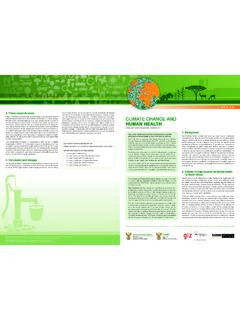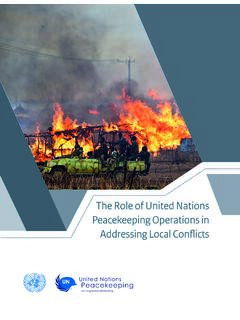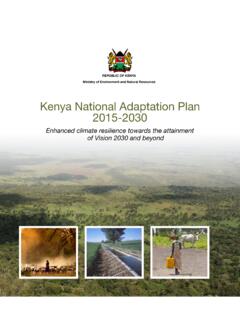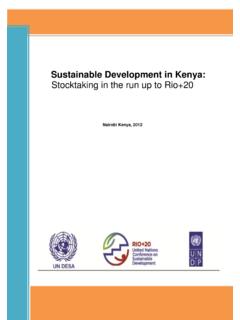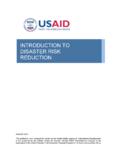Transcription of IMF Country Report No. 22/39 SOUTH AFRICA
1 IMF Country Report No. 22/39 . SOUTH AFRICA . FINANCIAL SECTOR ASSESSMENT PROGRAM. February 2022. FINANCIAL SYSTEM STABILITY ASSESSMENT. This paper on SOUTH AFRICA was prepared by a staff team of the International Monetary Fund as background documentation for the periodic consultation with the member Country . It is based on the information available at the time it was completed on January 21, 2022. Copies of this Report are available to the public from International Monetary Fund Publication Services PO Box 92780 Washington, 20090.
2 Telephone: (202) 623-7430 Fax: (202) 623-7201. E-mail: Web: Price: $ per printed copy International Monetary Fund Washington, 2022 International Monetary Fund SOUTH AFRICA . FINANCIAL SYSTEM STABILITY ASSESSMENT. January 21, 2022. Approved By This Report is based on the Financial Sector Assessment May Khamis and Abebe Program (FSAP) that was conducted via in-person and Selassie virtual missions during February 2020 and July 2021. The FSAP findings were discussed with the authorities during Prepared By the Article IV Consultation mission in November 2021.
3 Monetary and Capital Markets Department Context: The economy recovered strongly in 2021, following an unprecedented real output contraction in 2020. However, the outlook remains precarious amidst projected future low growth, high unemployment and adverse debt dynamics, and the recovery pace is unlikely to be sustained. Ample buffers allowed the financial system to handle the COVID-19 shock relatively well, but domestic and external downside risks remain substantial with potential implications for asset quality, profitability, and solvency.
4 Findings: Banks are resilient in the baseline but face notable capital erosion under a severe stress scenario, with weak debt servicing capacity of corporates and the potential intensification of the sovereign nexus posing risks to the financial system. Financial sector regulation is generally strong, with substantial progress since the 2014. FSAP, but more intrusive supervision, a formalized early intervention framework and completed safety net reforms are needed. Progress to further increase financial inclusion and access to finance has slowed in recent years, as account utilization remains limited and micro, small, and medium-sized enterprises (MSME) experience challenges in obtaining financing.
5 The fintech sector remains small, and banking sector entry barriers continue to limit competition. Policies: The challenging environment calls for more intensive supervision, with greater focus on governance and less reliance on external auditors. Further efforts to expand climate change risks in stress testing and supervision and stronger oversight of the growing fintech sector are also warranted. The mission recommended completing the bank resolution framework and finalizing the deposit insurance scheme, which will improve the authorities' ability to handle shocks.
6 Financial sector competition would benefit from reforms to foster market entry and increase capital market financing (including green' finance). SOUTH AFRICA . The FSAP team was led by Jennifer Elliott, IMF Mission Chief, and Eva Gutierrez, World Bank Mission Chief, and included Constant Verkoren (deputy mission chief), Zsolt Ersek, Rohit Goel, Ren Jie, Aldona Jociene, Tanai Khiaonarong, Suchitra Kumarapathy, Ken Miyajima, T. Tjoervi Olafsson, Nobuyasu Sugimoto, Thierry Tressel, and Christopher Wilson (all IMF); Uzma Khalil (deputy mission chief), Swee Ee Ang, Catiana Garcia Kilroy, Katia D'Hulster, Sonia Iacovella, Harish Natarajan, Douglas Randall, Rekha Reddy, Martijn Regelink, Diego M.
7 Sourrouille, and Fiona Stewart (all WB); as well as Geof Mortlock and Nick Strange (Bank of England) as external experts. Ren Jie and Alice Mugnier provided research support to the IMF team; and Charmane Ahmed and Natalia Naryshkina supported the preparation of this Report . The team met with Governor Lesetja Kganyago, Deputy Governor and Prudential Authority CEO. Kuben Naidoo, and senior officials of the SOUTH african Reserve Bank; Deputy Director General Ismail Momoniat and senior officials of the National Treasury; as well as senior officials from the Prudential Authority, Financial Services Conduct Authority, the National Credit Regulator, and private sector counterparts.
8 FSAPs assess the stability of the financial system as a whole and not that of individual institutions. They are intended to help countries identify key sources of systemic risk in the financial sector and implement policies to enhance its resilience to shocks and contagion. Certain categories of risk affecting financial institutions, such as operational or legal risk, or risk related to fraud, are not covered in FSAPs. This Report was prepared by Jennifer Elliott and Constant Verkoren, with contributions from the members of the IMF FSAP team.
9 2 INTERNATIONAL MONETARY FUND. SOUTH AFRICA . CONTENTS. Glossary _____ 5. EXECUTIVE SUMMARY _____ 7. BACKGROUND _____ 10. A. Macrofinancial Context _____ 10. B. Financial System Structure _____ 11. SYSTEMIC RISK ASSESSMENT _____ 12. A. Key Risks, Assessment Methods, and Scenarios _____ 12. B. Bank Solvency Stress Tests _____ 16. C. Bank Liquidity Stress Tests _____ 16. D. Nonbank Risk Analysis: Insurers, Fund Managers, and Pension Funds _____ 17. E. Macrofinancial Linkages: Households and Corporate Sector _____ 18.
10 F. Interconnectedness _____ 18. G. Capital Flows _____ 19. H. climate change Risk Analysis _____ 20. FINANCIAL SECTOR OVERSIGHT_____ 21. A. System-Wide Oversight and Macroprudential Policies _____ 21. B. Systemic Liquidity Management _____ 22. FINANCIAL SUPERVISION AND REGULATION _____ 22. CRISIS MANAGEMENT AND FINANCIAL SAFETY NETS _____ 24. FINANCIAL SECTOR DEVELOPMENT _____ 25. A. Competition and Efficiency _____ 25. B. Financial Inclusion and Access to Finance _____ 26. C. Market Development _____ 26. AUTHORITIES' VIEWS _____ 27.










